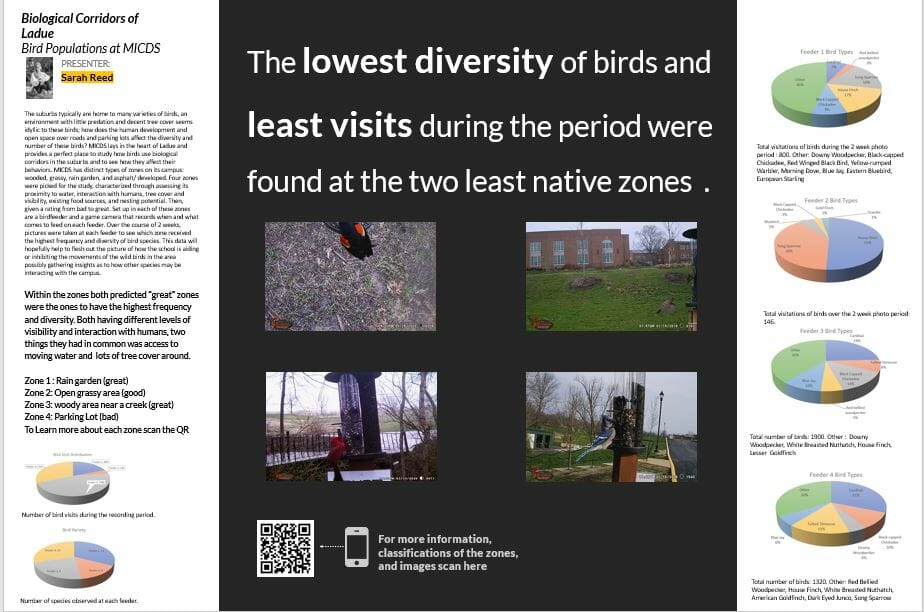Four Upper School students recently presented their science research projects in a virtual interview-style format. This is the culmination of months of work from the science seminar course and the independent science research course. The students learned the necessary skills to conduct and communicate science—for example, how to read and sort primary scientific literature; how to conduct research using common techniques; and how to collect, organize, analyze and compare data. Science research topics varied widely, including biological corridors, soil fertility and plant production, yeast metabolism and human performance. Students leveraged techniques learned during the course to conduct experiments, document their data, write a formal manuscript to report their findings and present a poster.
The four students and their poster titles are listed below, and their full posters are available for download by clicking on the title link. Additionally, the full-length video of the interview-style virtual science research symposium is available for viewing.
- Strength and Power – Testing the Efficacy of Training Programs by Molly Christopher ’20
- The Impact of Soil Microbes on Plant Productivity by Palmer Mihalevich ’20
- Biological Corridors of Ladue – Bird Populations at MICDS by Sarah Reed ’20
- Yeast as a Model Organism – Examining Biological Processes through S. Cerevisiae by Divya Singh ’21
Upper School Science Teacher Paul Zahller remarked, “I am very proud of these four students who recently finished up their ambitious projects for the year. They produced very high-quality work, especially considering how significant of a disruption it was to continue project-based research efforts in a remote environment. The posters they made all utilize a creative new design approach for communicating scientific work. There are live QR codes and links that allow viewers to see more detail about the materials and background.”
Hats off to these researchers on overcoming the challenge of distance learning in the scientific research field!
